FSP Aurum PT 1000W Power Supply Review
FSP's Aurum PT series PSUs are 80 PLUS Platinum-certified and fully modular. Today we will take a look at the series' 1000W mid-level unit.
Why you can trust Tom's Hardware
Transient Response Tests
Advanced Transient Response Tests
For details on our transient response testing, please click here.
In these tests, we monitor the response of the PSU in two different scenarios. First, a transient load (10A at +12V, 5A at 5V, 5A at 3.3V and 0.5A at 5VSB) is applied to the PSU for 200 milliseconds while the PSU is working at 20 percent load. In the second scenario, the PSU is hit by the same transient load while operating at 50 percent load. In both tests, we use our oscilloscope to measure the voltage drops caused by the transient load. The voltages should remain within the ATX specification's regulation limits.
These tests are crucial because they simulate transient loads a PSU is likely to handle (such as booting a RAID array or an instant 100 percent CPU/GPU load). We call them Advanced Transient Response Tests, and they are designed to be very tough to master.
Advanced Transient Response 20%
| Voltage | Before | After | Change | Pass/Fail |
|---|---|---|---|---|
| 12V | 12.022V | 11.946V | 0.63% | Pass |
| 5V | 5.175V | 5.087V | 1.70% | Pass |
| 3.3V | 3.358V | 3.242V | 3.45% | Pass |
| 5VSB | 5.032V | 4.980V | 1.03% | Pass |
Advanced Transient Response 50%
| Voltage | Before | After | Change | Pass/Fail |
|---|---|---|---|---|
| 12V | 11.987V | 11.929V | 0.48% | Pass |
| 5V | 5.153V | 5.067V | 1.67% | Pass |
| 3.3V | 3.338V | 3.236V | 3.06% | Pass |
| 5VSB | 5.005V | 4.955V | 1.00% | Pass |

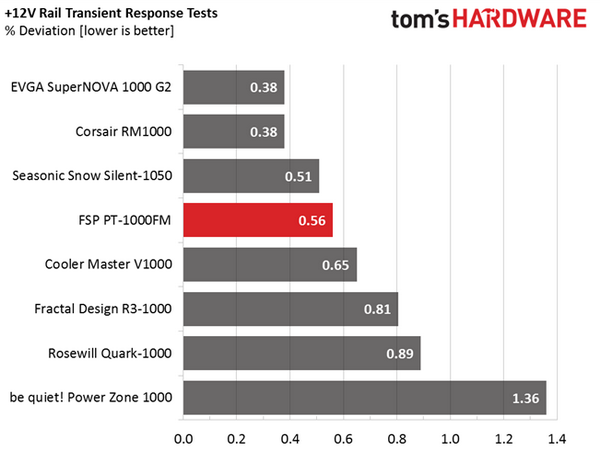


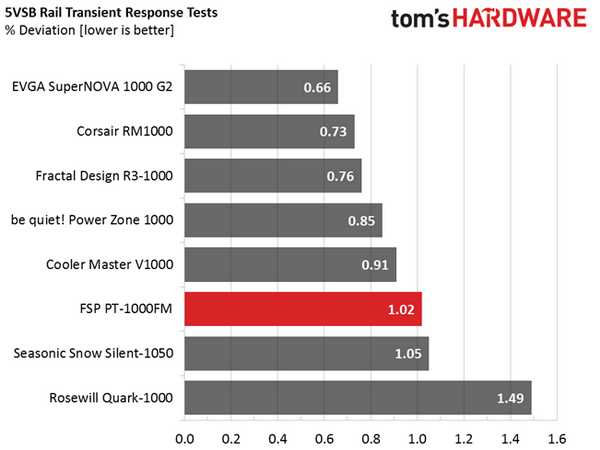
The PSU handled the transient loads that we applied just fine, and the +12V rail, which has to do the hardest work of all the rails for this type of load, registered close to a 0.5 percent deviation in both tests.
Below are the oscilloscope screenshots we took during Advanced Transient Response Testing.
Transient Response At 20 Percent Load
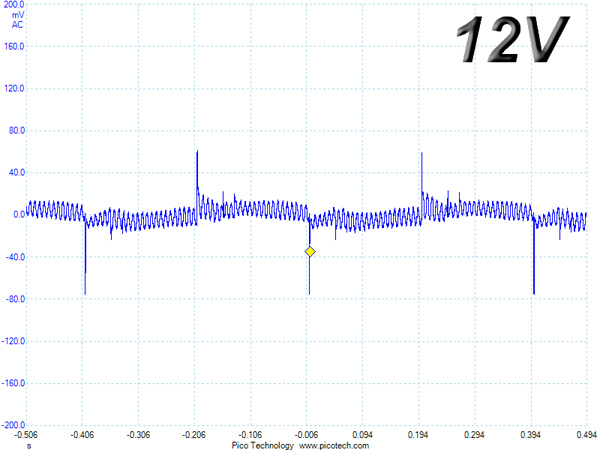

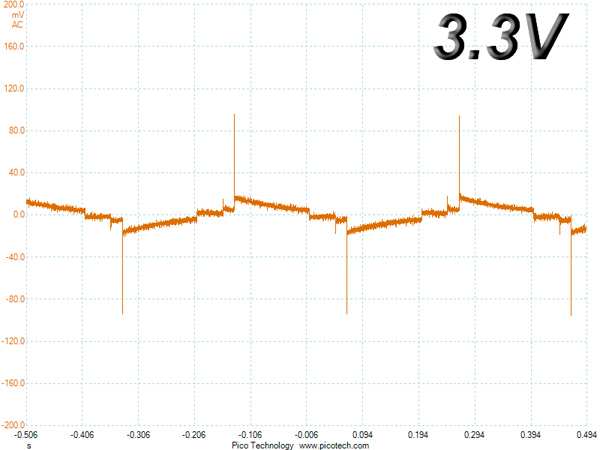
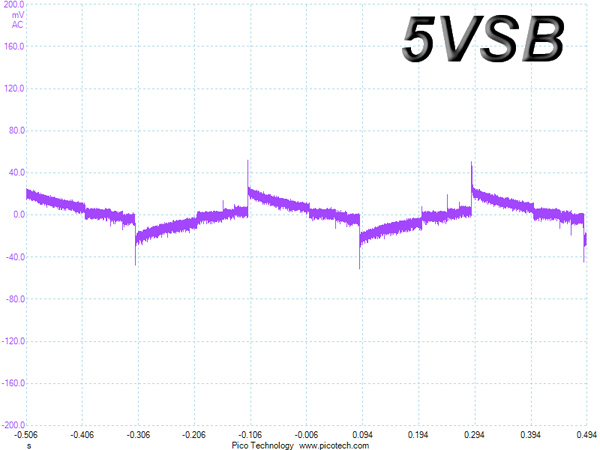
Transient Response At 50 Percent Load
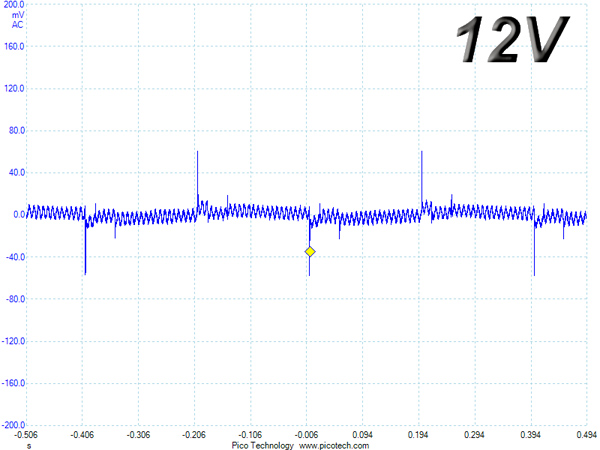

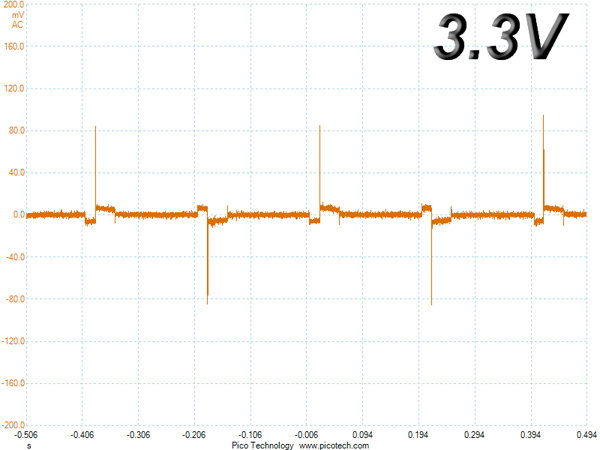
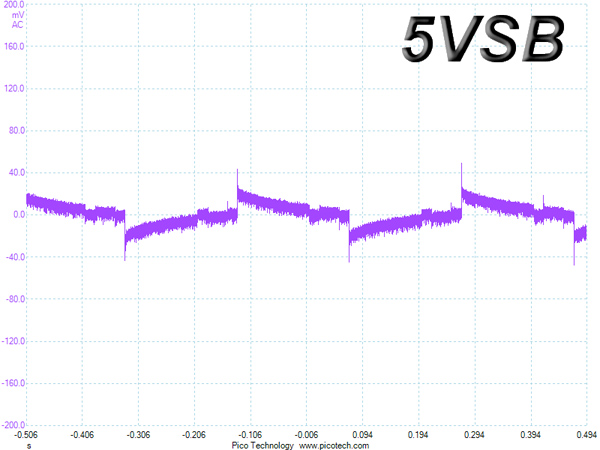
Turn-On Transient Tests
We measure the response of the PSU in simpler scenarios of transient load—during the power-on phase of the PSU—in the next set of tests.
For the first measurement, we turn off the PSU, dial in the maximum current the 5VSB can output and then switch on the PSU. In the second test, we dial the maximum load +12V can handle and start the PSU while it's in standby mode. In the last test, while the PSU is completely switched off (we cut off power or switch the PSU off by flipping its on/off switch), we dial the maximum load the +12V rail can handle before switching on the PSU from the loader and restoring power. The ATX specification states that recorded spikes on all rails should not exceed 10 percent of their nominal values (+10 percent for 12V is 13.2V and 5.5V for 5V).
Get Tom's Hardware's best news and in-depth reviews, straight to your inbox.

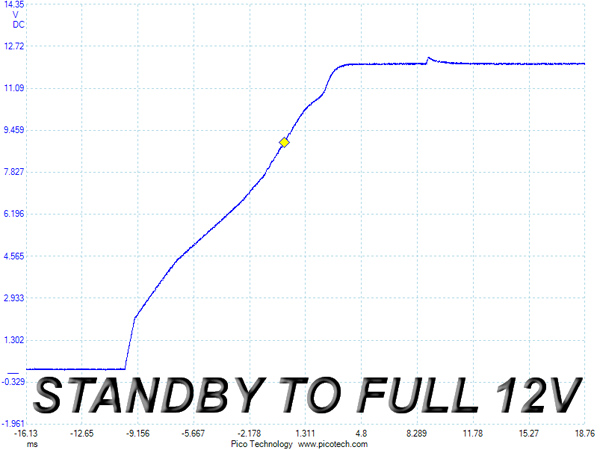

In the 5VSB turn-on test, the result was almost flawless. In the other two tests, there was only a small spike after the voltage was settling down, and in the last test, the slope didn't ramp up so smoothly at the beginning. In any case, the results show the unit is able to deliver its full power instantly and without any problems on all of the rails, including the +12V and 5VSB and the minor rails.
Current page: Transient Response Tests
Prev Page Cross-Load Tests And Infrared Images Next Page Ripple Measurements
Aris Mpitziopoulos is a contributing editor at Tom's Hardware, covering PSUs.
-
Giannis Karagiannis Just ordered one! Very comprehensive review! It is a bit strange that thanks to your recent articles I can choose a power supply with much greater confidence than a CPU or VGA. Keep up the good work!Reply -
Vosgy ReplyJust ordered one! Very comprehensive review! It is a bit strange that thanks to your recent articles I can choose a power supply with much greater confidence than a CPU or VGA. Keep up the good work!
Man haven't seen anyone call them Video Graphics Accelerators in years, kudos to you good sir. -
Covaylent Nice work, Aris, as usual.Reply
Would you mind commenting on the infrared images? Some of those hotspots seem quite hot - am I just reading the images incorrectly? -
Aris_Mp Indeed some hotspots are very hot since I usually take this shots with the PSU operating at very high ambient temperatures. Some parts inside the PSU may operate at up to 100C under such conditions.Reply